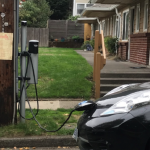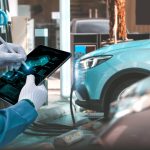Let’s be honest—2025 isn’t exactly rolling out the red carpet for trucking companies. Between fuel price rollercoasters, driver shortages, and tech that’s evolving faster than a Tesla in the fast lane, the industry’s got its hands full. But here’s the deal: trucking isn’t just surviving—it’s adapting in ways that might surprise you.
The Elephant in the Cab: Driver Shortages
You’ve heard it before, but it’s still true: finding drivers is like searching for a parking spot at a packed truck stop. The American Trucking Associations estimates a shortfall of 80,000 drivers in 2025—and that gap isn’t closing anytime soon. So how’s the industry coping?
1. Sweetening the Deal
Companies aren’t just offering higher pay (though that’s part of it). They’re throwing in perks like:
- Sign-on bonuses that could buy a decent used car
- Better health benefits—because no one wants to ignore that back pain
- “Home more often” routes that don’t make drivers feel like nomads
2. Targeting Untapped Demographics
Women make up less than 10% of truckers—a stat that’s starting to shift. Training programs are actively recruiting female drivers, veterans, and even younger folks straight out of high school. And let’s not forget automation’s role—but we’ll get to that.
Fuel Costs: The Never-Ending Headache
Remember when diesel was cheap? Yeah, neither do most fleet managers. With prices swinging like a pendulum, companies are getting creative:
| Strategy | How It Helps |
| Route optimization software | Saves up to 15% on fuel by avoiding traffic and idle time |
| Electric & hydrogen trucks | Early adopters are testing waters—expensive now, but long-term bets |
| Aerodynamic trailer upgrades | Small tweaks = big mileage gains over thousands of miles |
Funny thing is, some fleets are actually saving money compared to pre-pandemic days—thanks to tech that would’ve seemed like sci-fi a decade ago.
Tech That’s Changing the Game
Here’s where things get interesting. The cab of a 2025 truck looks more like a spaceship than your granddad’s rig. A few game-changers:
Platooning: Like a Conveyor Belt on the Highway
Imagine trucks driving in tight formation, communicating via Wi-Fi to brake and accelerate simultaneously. It cuts wind resistance—and fuel costs—by up to 10%. The catch? Regulations are still playing catch-up.
Predictive Maintenance
No more “wait till it breaks” mentality. Sensors now predict when a part’s about to fail, saving thousands in roadside repairs. One fleet manager put it bluntly: “It’s like your truck texts you, ‘Hey, fix me before I leave you stranded.’”
The Automation Paradox
Self-driving trucks are coming—but not how you might think. Fully autonomous? Maybe by 2035. Right now, it’s about assistive tech:
- Lane-keeping systems that nudge drivers back on course
- Automatic emergency braking—because human reaction times aren’t perfect
- Self-parking for those tight dock situations
The real win? These tools make driving less exhausting, which helps retention. Who wouldn’t want an AI co-pilot handling the boring stretches?
Regulatory Whiplash
2025’s brought a mixed bag of rules. Some states are tightening emissions standards, while others are loosening hours-of-service regulations to ease supply chain snarls. The smartest fleets? They’re hiring compliance officers like they’re going out of style—because playing catch-up with regulations is a surefire way to lose money.
What’s Next? A Human-Machine Tango
The trucking industry’s always been gritty, hands-on, resistant to change—until change becomes unavoidable. What’s fascinating about 2025 isn’t just the tech or the shortages, but how drivers and companies are finding that sweet spot between tradition and innovation. The road ahead isn’t smooth, but then again, when has trucking ever been about easy miles?










